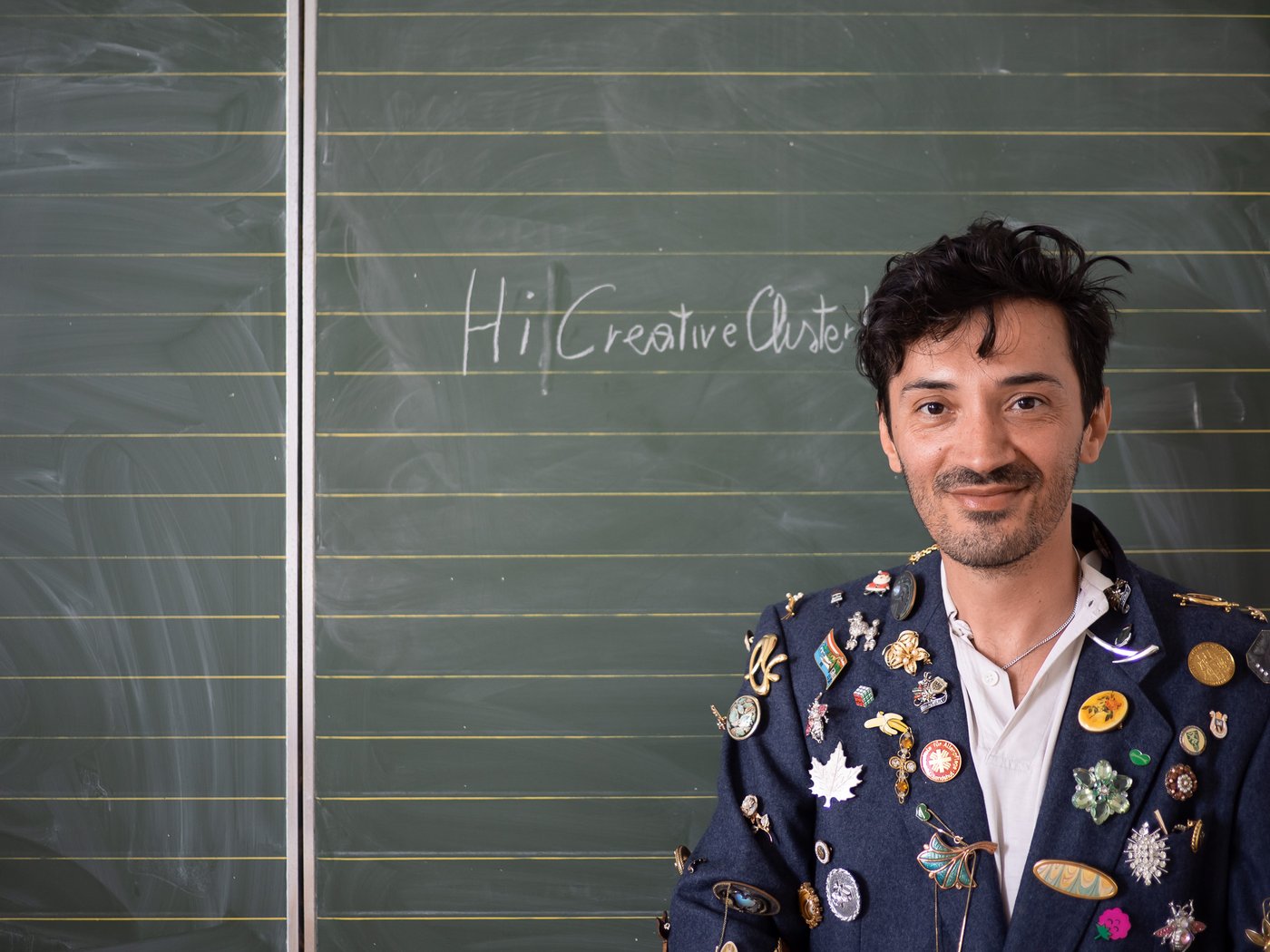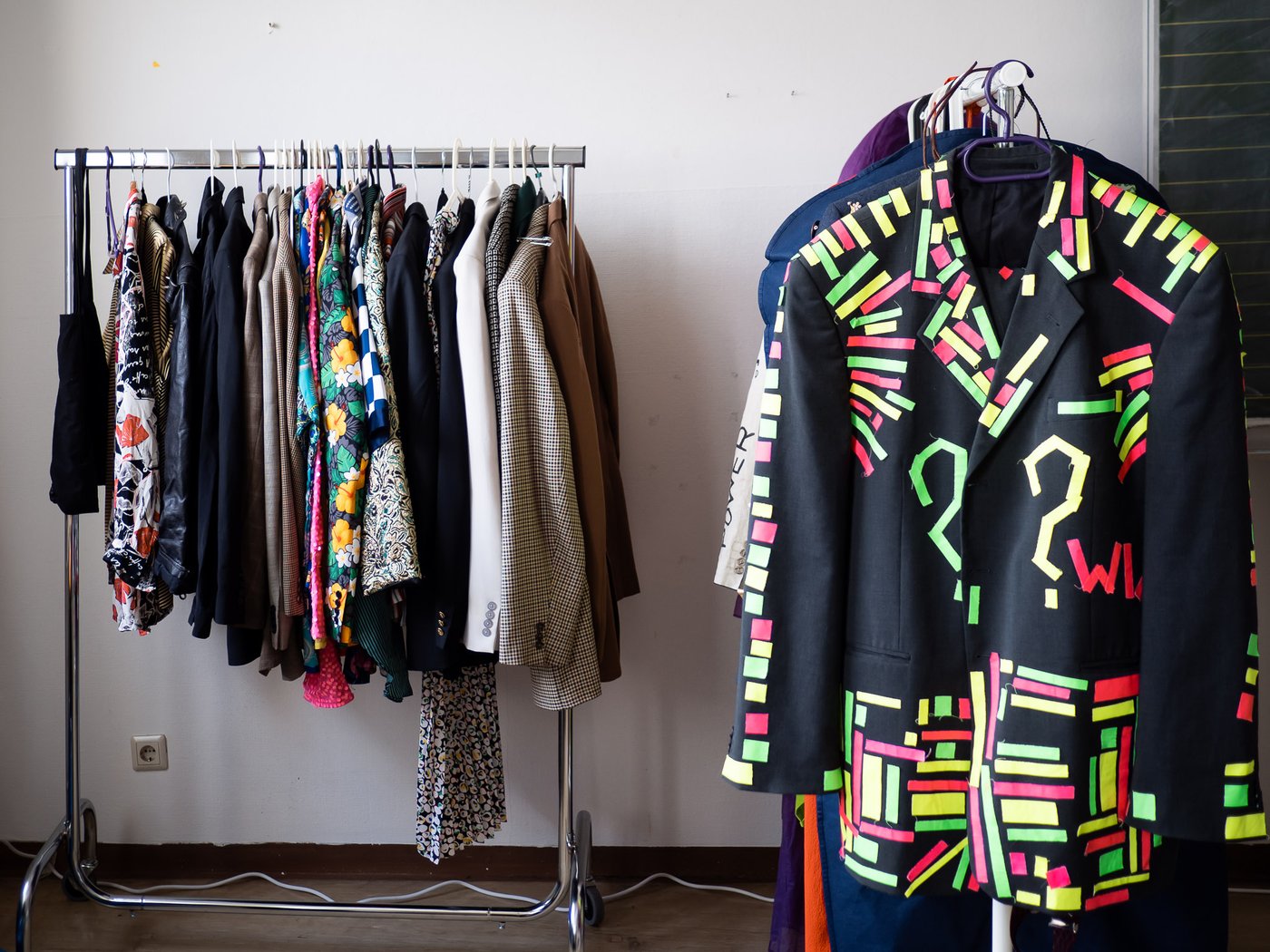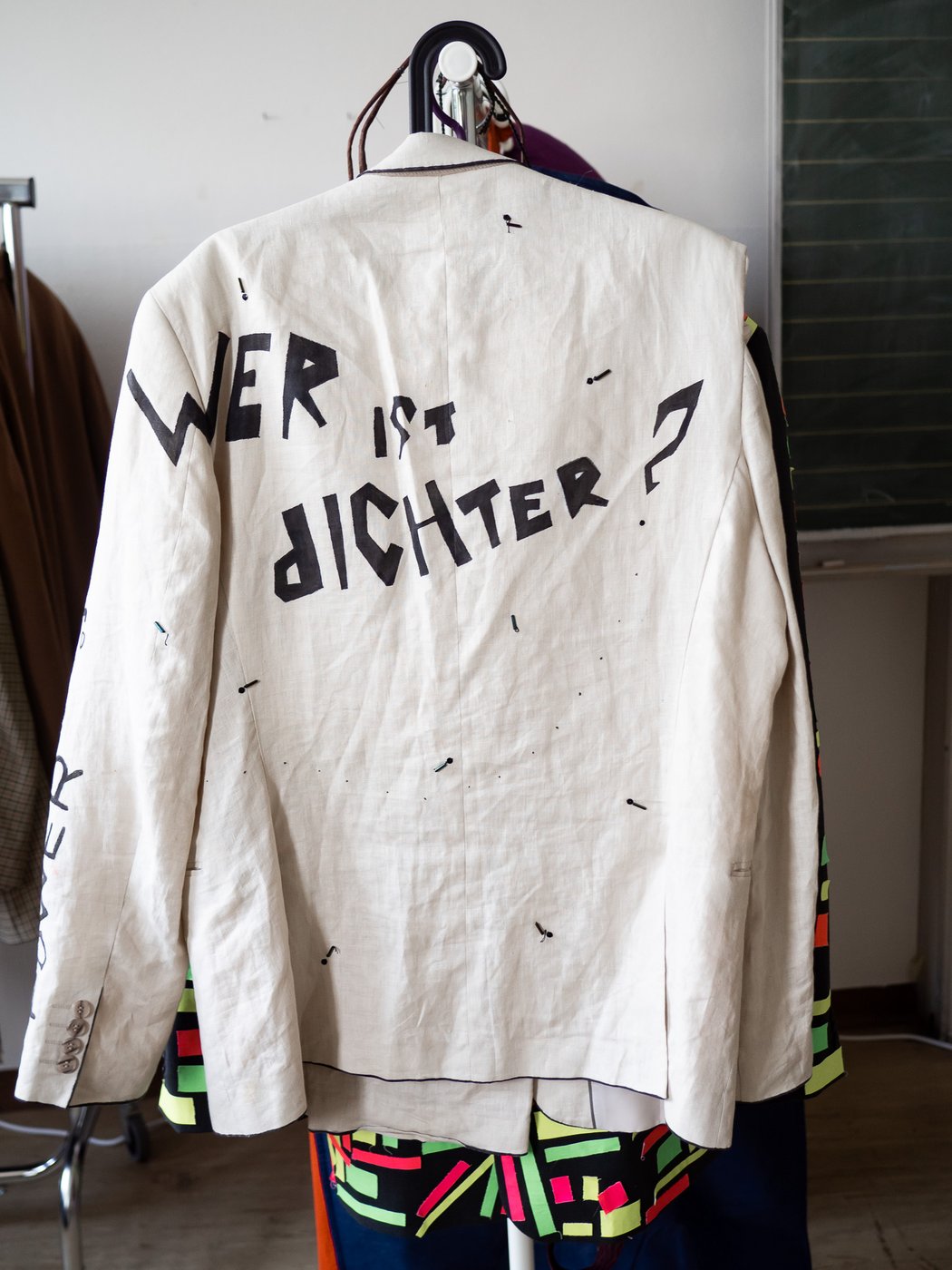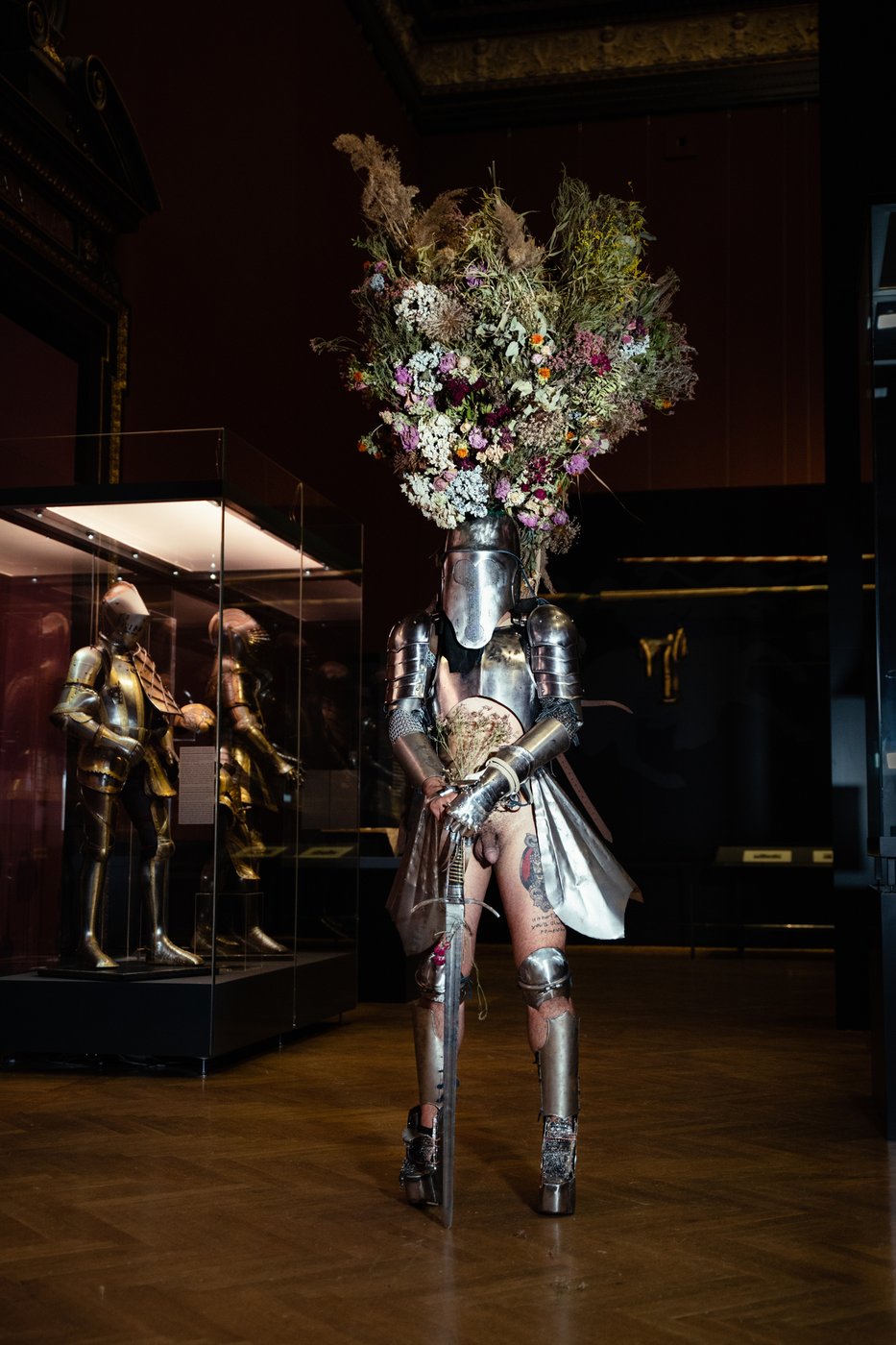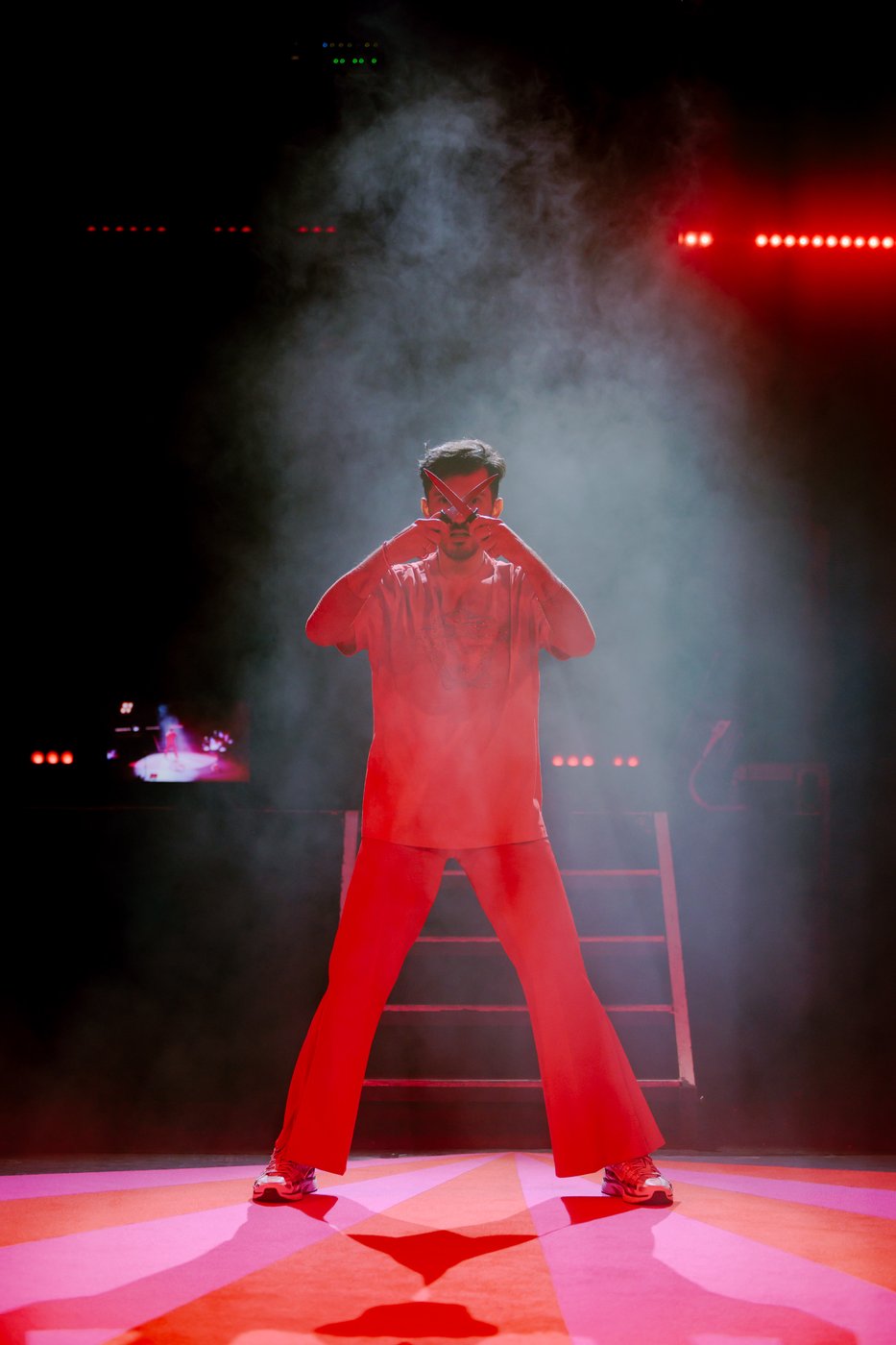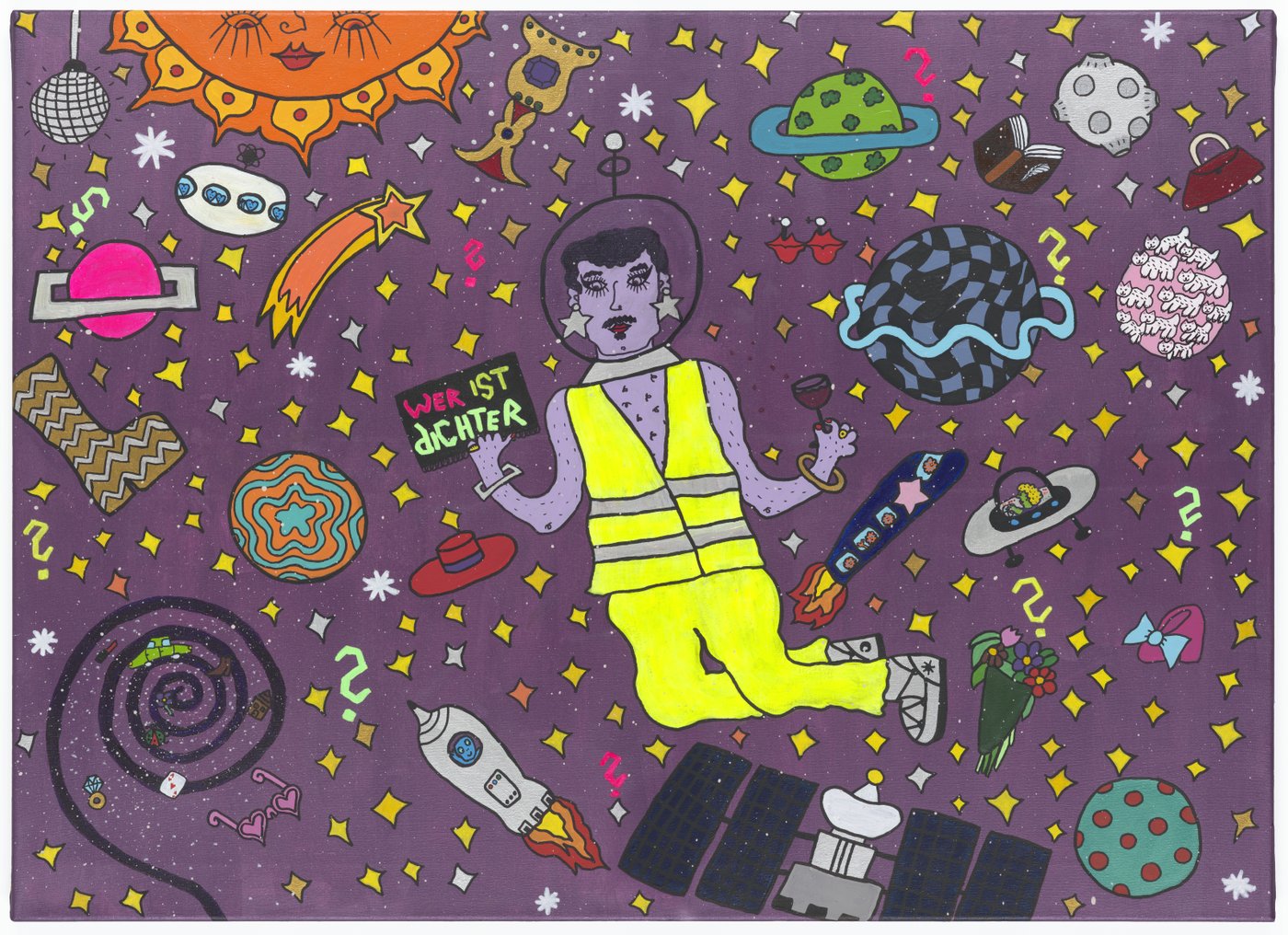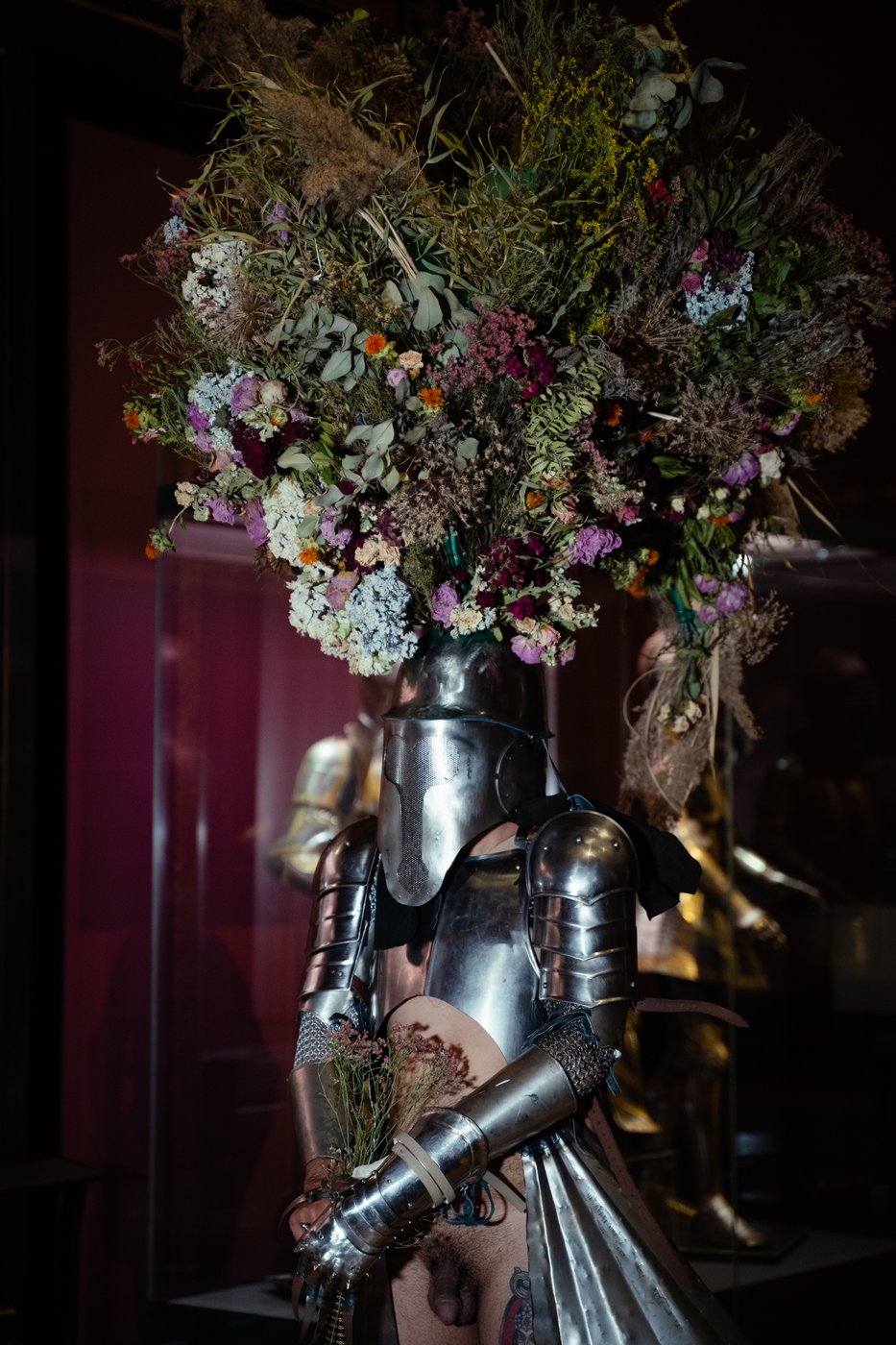Alexandru Cosarca
In conversation with Barbara Pflanzner, Academy Studio Program, Creative Cluster, May 13, 2024.
You studied with Ashley Hans Scheirl and are a visual artist and performer. What is your artistic focus?
I work at the intersection of visual and performing arts. I focus on performance, as well as organizing events and making communities and community-building visible. One of my most important projects is WERISTdICHTER?, a format that combines different media and forms such as readings, performances, live music, and visual art.
In your performative work, you engage with gender roles, queerness, and body extensions, among other themes. I find Happymetal, which was shown in 2022 as part of Queering the KHM, a very beautiful work in this regard. In it, you redefined a suit of armor. What can you tell us about this project?
That was a very heavy project, in the literal sense of the word. The armor was created in collaboration with Florin Curic at the invitation of the Kunsthistorisches Museum (KHM). At that time, the special exhibition Iron Men – Fashion in Steel was on show, and I was fascinated by all the armor presented there. This prompted me to ask the question: Who or what do I need to protect? Do I need to protect myself? Especially in times of the Ukraine war and the overall global political situation, I find these questions relevant. My armor has a queer-feminist connection: its shape is a rare form of a silver mini-skirt dress, it also consists of a helmet with oversized headgear and metal high heels. Additionally, my fingernails were painted red. During the performance, I walked through the premises of the Kunsthistorisches Museum and recited lines from a text I had written, specifically the passage: “I have to fight for my Gayrechtigkeit, I have to protect my Spiegelbild! How can I protect happiness without being evil?” The performance was musically supported by Anna Dian, who created small sound pieces for it. On the back of the armor was a box with speakers that played Anna Dian’s sounds, as well as poems and texts, and short conversations between Florin Curic and me. The performance was shown twice, and it was very exciting, but also a challenge to wear the armor in high heels, with the helmet that restricted my vision, as well as the headgear.
You mainly work collectively in your performative works; you’ve already mentioned WERISTdICHTER?, and ContextCocktail is another format you founded. How are these collectives structured, and in what way do they differ from your own performative pieces?
ContextCocktail and WERISTdICHTER? were created at the same time in 2017 during the Rundgang, when I organized an evening with Annemarie Arzberger, titled ContextCocktail: WERISTdICHTER? WERISTdICHTER? eventually took on a life of its own, gaining more popularity and quickly leading to numerous performance evenings. ContextCocktail is currently structured as a collective association, consisting of Sarah Tasha Hauber, Annemarie Arzberger, and myself. Compared to WERISTdICHTER?, ContextCocktail primarily organizes exhibitions and focuses more on visual arts, while WERISTdICHTER? emphasizes literature and performance. In my own collective work, I usually concentrate on theater productions and poetry performances. I love working collectively. When Ashley Hans Scheirl accepted me at the Academy, I took the opportunity to meet and exchange ideas with many other students – something I find wonderful and enriching. I also find the networking opportunities here in the Creative Cluster invaluable. For example, Jasmin Hagendorfer, with whom I studied and now share a studio during the Studio Program, has been invited to do a performative reading at the next edition of WERISTdICHTER?.
You mentioned theater productions earlier: In April of this year, Natalie Assmann’s piece Lonely for You – The Super Show premiered at the WUK, where you hosted the show as “Dru.” Are the personas here distinct?
Absolutely! The major difference is that when I host WERISTdICHTER?, I don’t speak. Instead, I use a black pad where all the texts, greetings, and the artists’ names are written in gaffer tape. In Lonely for You, I embody a failed former Viva host who left Viva in the mid-2000s and is now staging his big comeback show. It was an incredible challenge for me because I have never had to learn so much text or acted before. But I learned a great deal. Since Natalie Assmann comes from classical theater, I got a crash course in acting, including how to work with the text. The piece addresses the theme of loneliness, which has become even more relevant since the pandemic and lockdowns, affecting many people. There are many forms of loneliness – loneliness in the context of sexual orientation, poverty, illness, being queer in old age – I could go on and on. But we tried to bring a certain lightness and humor to it because the topic is indeed quite heavy.
Because you mention humor: Your works often seem very humorous to me. Is this aspect fundamentally important to you?
It’s not something I consciously plan; I don’t intentionally try to project humor. I think I’m just a quirky person! I also enjoy consuming art that is funny. I believe humor can open up a lot of things; it allows serious, heavy topics to be addressed and lightens things up if you want to convey political content. I must also say that I adopted the attitude that it’s okay to be funny in your work from Ashley Hans Scheirl.
Another major project you were involved in as a performer is Marta Navaridas’s piece Manifestations, which premiered at Tanzquartier in February 2024. What can you tell us about this project?
Manifestations was one of the most beautiful collaborations I have ever done. Marta Navaridas directed and choreographed the piece. Alex Franz Zehetbauer, Julia Franz Richter, Beatrice Frey, Alice Peterhans, Alex Deutinger and I performed. Before the performance, we were equipped with microphones and exposed to various situations and experiences. For example, we took a trip into Vienna’s sewers, smelled things blindfolded, rode a roller coaster in the Prater, and visited the Kunsthistorisches Museum. All these impressions were recorded and edited by Marta together with Manuel Rieger. During the performance, we performers received fragments of these experiences through an in-ear headphone and reenacted them. When we rode the rollercoaster in the Prater, for instance, I screamed very loudly in panic. In the piece, there’s a moment where we’re all sitting in a row looking towards the audience, and this scream is played into my ear prompting me to reenact the situation and my spontaneous outburst. In this altered context, completely new images and comedy are created, as the audience sees the reenacted reactions without knowing what triggered them. The stage design is also mirrored – we performers move in a completely empty space between the chairs on the side where the audience are normally located, while the audience sits on the stage. It turned out to be an incredibly fantastic piece. It will be shown again at Tanzquartier Wien at the end of December.
In your studio, numerous pieces of clothing are hanging on a rack. What’s the story behind them?
Yes, I also work on creating costumes, mainly for WERISTdICHTER?. The jacket I’m currently wearing has over 200 brooches attached, which my mother bought at flea markets. Sustainability is very important to me. Rather than buying something new, I prefer to buy used clothes and transform them into a unique work of art. For example, a two-piece linen suit displays the names of all the artists who participated in a particular edition of WERISTdICHTER?. Another suit was altered with gaffer tape – the same tape I use to label my blackboard – for the WERISTdICHTER? edition at the Kunsthalle Wien. Sometimes, I also collaborate with other collectives and fashion designers, such as with Hybrid Dessous, who also have their studio here in the Creative Cluster.
Additionally, your artistic work includes photographic pieces.
Exactly. One series consists of photographs from public spaces, where I search for and photograph inscriptions on building facades and manually print them on tiles. The series I Wish I Woof Woof features dogs waiting outside supermarkets, displayed in vintage picture frames. Another work is titled Auto-Magic-Kauen. It shows images of chewing gum machines and includes a performative element. Visitors were invited to chew gum with me while I recounted the history of chewing gum machines – where they come from, when they were made. Once the gum was chewed, I reclaimed it and used it as adhesive material for a collage of photos of the machines.
What projects will you be working on in the near future?
I’m trying to take care of myself a bit and not work too much. Still, there is a lot coming up. I’m looking forward to an exhibition at Galerie 3 on Schleifmühlgasse 3 and a workshop titled Wer ist Workshop?, which will be presented in collaboration with the Queer Museum Vienna at Tangente St. Pölten. In the fall, there will be an exhibition with ContextCocktail at the Puul Space Gallery and the thirtieth edition of WERISTdICHTER?, which will go along with an exhibition. There will also be a film screening evening at the Fortuna Kino in the 10th district and a three-day WERISTdICHTER? live event at the bar in Kosmos Theater.
Thank you! I’m done with my questions. Would you like to add anything?
Yes, I would like to thank the Academy of Fine Arts Vienna for making the Studio Program possible. It is fantastic to be able to use a studio for such a long time free of charge. Additionally, the facilities here in the Creative Cluster provide a great opportunity for networking. So, thank you very much for the scholarship!
